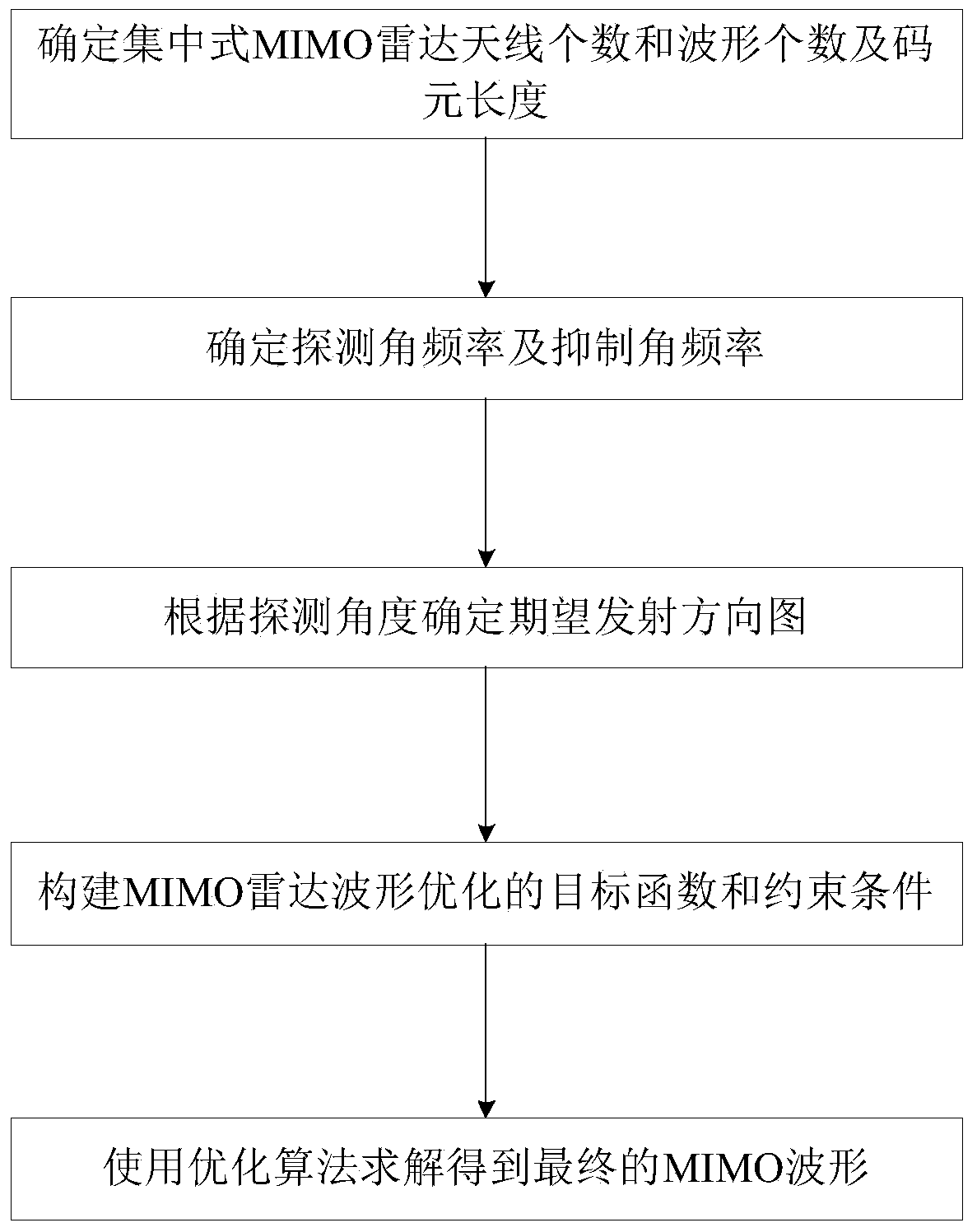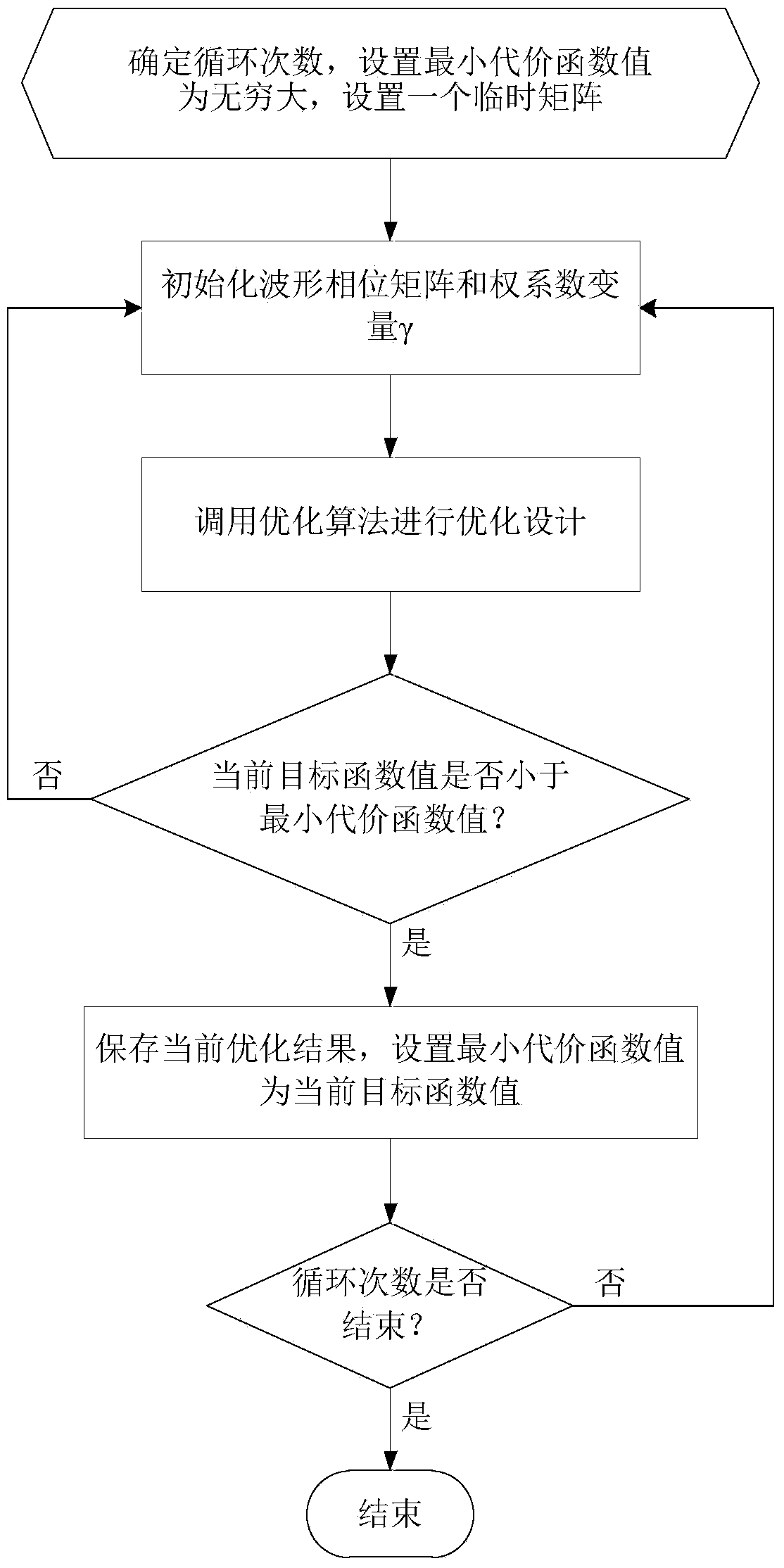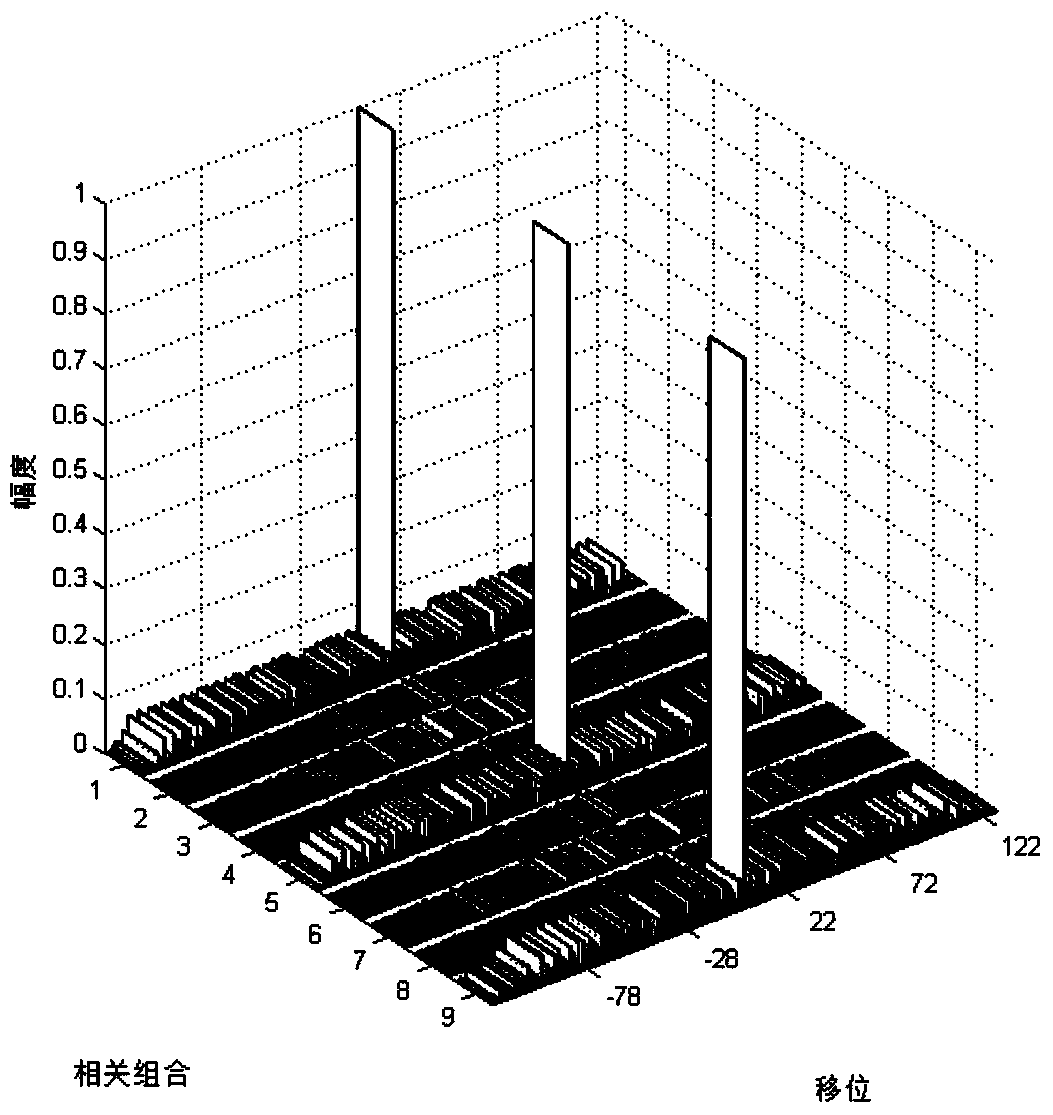Centralized MIMO (Multiple Input Multiple Output) radar waveform designing method based on receiving wave beam formation
A radar waveform and receiving beam technology, applied in the radar field, can solve the problem of reducing the distance side lobe and angle side lobe of the received echo of the centralized MIMO radar, reducing the detection performance of the centralized MIMO radar, high distance side lobe and angle side lobe, etc. question
- Summary
- Abstract
- Description
- Claims
- Application Information
AI Technical Summary
Problems solved by technology
Method used
Image
Examples
Embodiment Construction
[0023] refer to figure 1 , the implementation steps of the present invention are as follows:
[0024] Step 1, determine the number of centralized MIMO radar antennas and the number and length of MIMO radar waveforms.
[0025] In the present invention, since the transmitting beamforming and receiving beamforming are used in the waveform design process, it is necessary to determine the number of transmitting antennas and the number of receiving antennas of the centralized MIMO radar. And the present invention requires that both the transmitting antenna array and the receiving antenna array are uniform linear arrays with a half-wave spacing. For a given centralized MIMO radar system, the number of transmit antennas and receive antennas is known.
[0026] According to the actual centralized MIMO radar system, the number of transmitting antennas N is obtained t and the number of receiving antennas N r ;
[0027] According to the number of MIMO radar waveforms is equal to the n...
PUM
 Login to View More
Login to View More Abstract
Description
Claims
Application Information
 Login to View More
Login to View More - R&D
- Intellectual Property
- Life Sciences
- Materials
- Tech Scout
- Unparalleled Data Quality
- Higher Quality Content
- 60% Fewer Hallucinations
Browse by: Latest US Patents, China's latest patents, Technical Efficacy Thesaurus, Application Domain, Technology Topic, Popular Technical Reports.
© 2025 PatSnap. All rights reserved.Legal|Privacy policy|Modern Slavery Act Transparency Statement|Sitemap|About US| Contact US: help@patsnap.com



